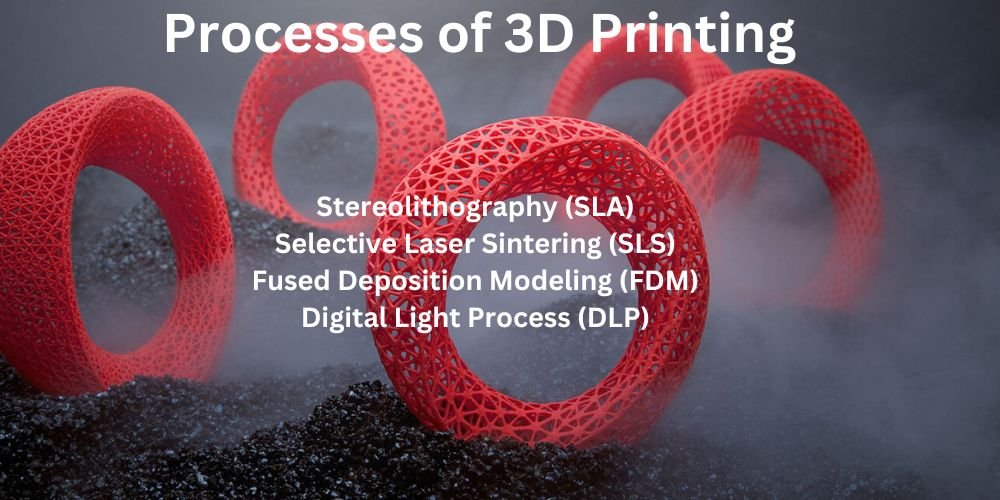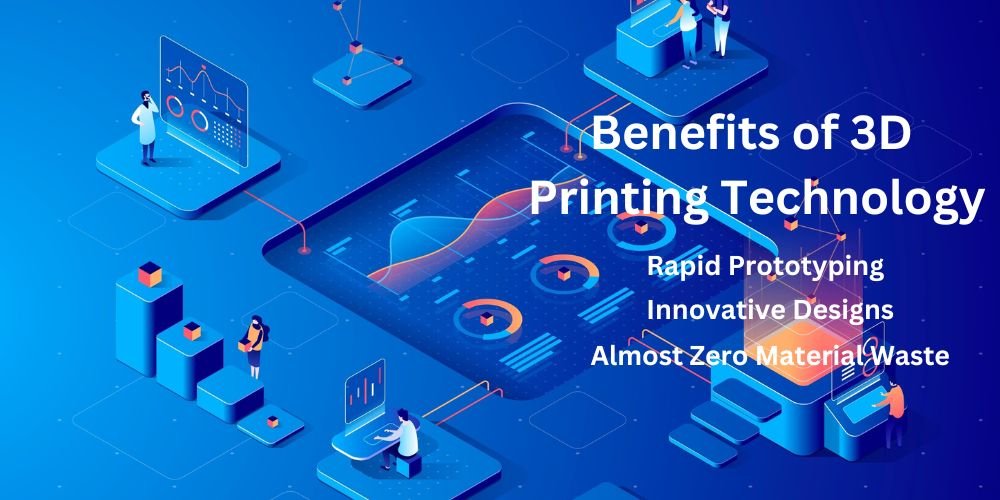3D printing technology is revolutionizing the world. With 3D printing, we can now turn digital designs into actual physical objects, increasing the possibilities for manufacturing and design.
Hideo Kodama, a Japanese inventor, invented 3D printing using the additive process in 1981. The use of 3D printing has developed over time and is now common in a wide range of areas, including the automotive, aerospace, and healthcare businesses.
If you’re a manufacturer or a business owner, you can use 3D printing to make things that are impossible to make using traditional production methods. This technology has countless uses and the potential to revolutionize how we make and work with objects.
What is 3D Printing?
3D printing, or additive manufacturing, is the process of creating three-dimensional bodies from a computer file. A 3D technology item is created using additive processes. Additive manufacturing creates an object by adding successive layers of material until an object is created. Each of these layers can be viewed as a thin cross-section of the object.
3D printing is the opposite of subtractive manufacturing, i.e. cutting/hollowing out a piece of metal or plastic, for example with a milling machine. 3D printing allows you to create complex shapes with less material than traditional manufacturing methods.
Read more the following topics:
Top Biotechnology Trends and Innovations to Look For in 2023 – A Complete Walkthrough
How Robotics Technology is Shaping the Future: A Comprehensive Overview
Processes of 3D Printing

Stereolithography (SLA)
Stereolithography (SLA) is the industrial 3D printing process. SLA printers are excellent at creating parts with fine details, slippery surfaces, and close tolerances. High-quality surface finishes on SLA parts not only look good but can also support the function of the part, for example by checking an assembly for fit.
Charles Hull invented Stereolithography (SLA) in 1986. It is widely used in the medical industry and common applications include anatomical models and microfluidics.
Selective Laser Sintering (SLS)
Selective Laser Sintering (SLS) is used in the powder-based 3D printing process. It uses fuse layers of material together to create a finished part. In a bed of powder, the laser follows the pattern of every cross-section of a 3D design.
Selective laser sintering (SLS) was invented by Dr. Carl Deckard. SLS can provide significant time and cost savings for low-volume parts that would otherwise need to be assembled using traditional manufacturing. SLS is a perfect combination of functionality, strength, and complexity.
Fused Deposition Modeling (FDM)
Fused Deposition Modeling (FDM) or Fused Filament Fabrication (FFF) is an additive manufacturing process in the field of material extrusion. FDM printing technology was invented in 1988 by Scott Crump.
An FDM 3D printer ink deposits melting filament material onto a build platform layer by layer. Using digital design files that are loaded onto the machine, FDM converts them into physical dimensions.
Digital Light Process (DLP)
DLP 3D printing utilizes a digital light projector that can simultaneously flash a single image of each layer on a layer or resin. DLP is used to produce larger parts or larger volumes of parts in a single batch because each layer flash takes the same amount of time regardless of the number of parts in the build, making it faster than the laser method in SLA.
DLP (Digital Light Processing) is a process that is similar to stereolithography. It is a 3D printing process that uses photopolymers. The key difference is the type of light used by DLP to cure the resin.
3D Printing – A Game-Changer for These Industries
The Footwear Industry
Over the last few years, well-known brands such as Adidas and Nike have successfully involved this AI technology in their traditional manufacturing processes, using it for everything from soles to full prototypes. Total revenue from 3D-printed footwear is expected to exceed $9 billion by 2030.
3D printing helps footwear manufacturers to avoid issues that slow down progress and limit design options. 3D printers use a digital process that eliminates tooling, reduces the time between manufacturing phases, and expands customization options.
The Medicine and Healthcare Industry
3D printing in medicine and healthcare has the potential to revolutionize drug development and medical equipment manufacturing. It could also provide new methods of practicing medicine, optimize supply chains, and provide less expensive and more personalized medical services.
The key advantage of using 3D printing in the medical field is customization. The 3D printing process allows for the creation of devices that perfectly match the needs of the patient, as well as tools that can be customized to the daily use of a surgeon.
The Housing Industry
3D-printed homes provide a sustainable, economical, and highly customizable alternative that is revolutionizing the home construction industry.
Grand View Research estimates that the global market of 3D printed houses worth USD 16.75 billion in 2022 and is anticipated to grow at a CAGR of 23.3%from 2023 to 2030.
The key benefit of 3D printing technology in the construction sector is the reduction of production costs caused by material waste. 3D printed home is much more affordable to build than the traditional method due to the decrease in raw material costs.
Benefits of 3D Printing Technology

Following are some major benefits of using 3D printing technology.
Rapid Prototyping
With 3D technology, the ability to create prototypes of new products quickly and cheaply is a game changer for businesses and entrepreneurs.
Previously, it took months or even years to develop a new product. Using the 3D printing process, businesses can create prototypes in days or even hours.
Innovative Designs
3D technology provides design shapes and customization that would be impossible or expensive to achieve through traditional methods.
Printers can precisely place small amounts of concrete where needed for complex shapes, increasing the architect’s design options.
Almost Zero Material Waste
When compared to traditional methods, the 3D printing process requires only the materials needed for the part itself, with little or no waste. The process not only saves resources but also lowers the cost of the materials used. For more information on industrial design make sure you check out Paraform.
Final Verdict
It is accepted that 3D printing will be a game changer in manufacturing. It already has a significant impact on industries like footwear, housing, medical, and its impact will only grow in the future. 3D printing technology with the ability to create complex objects with minimal waste. It plays an important role in shaping the future of manufacturing and product design.
Read more:
How Blockchain Technology Can Enhance Privacy and Security in the IoT Ecosystem
















